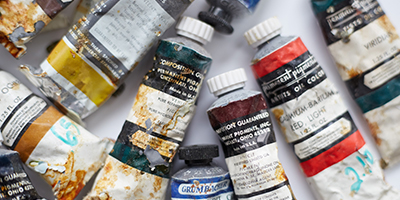
WHAT IT TAKES TO WEIGH THE RAINBOW
brutjournal's science-and-art contributor David Bjerklie is a science writer and editor, and former science reporter for TIME magazine. He is based in New Jersey and Minnesota.
by David Bjerklie
There are so many ways to talk about color.
We can approach the characteristics and qualities of color from art-historical, aesthetic, or even psycho-emotional perspectives. In turn, each of these vantage points requires its own distinct vocabulary for discussing the subject. Color may also be considered in a more rarefied, technical realm, in which numerical scales are used to describe tint, tone, and shade, or hue, luminance, and saturation. Color can be measured with colorimeters and spectrophotometers and assigned chromaticity coordinates and spectral reflectance values.

to read the whole article.

